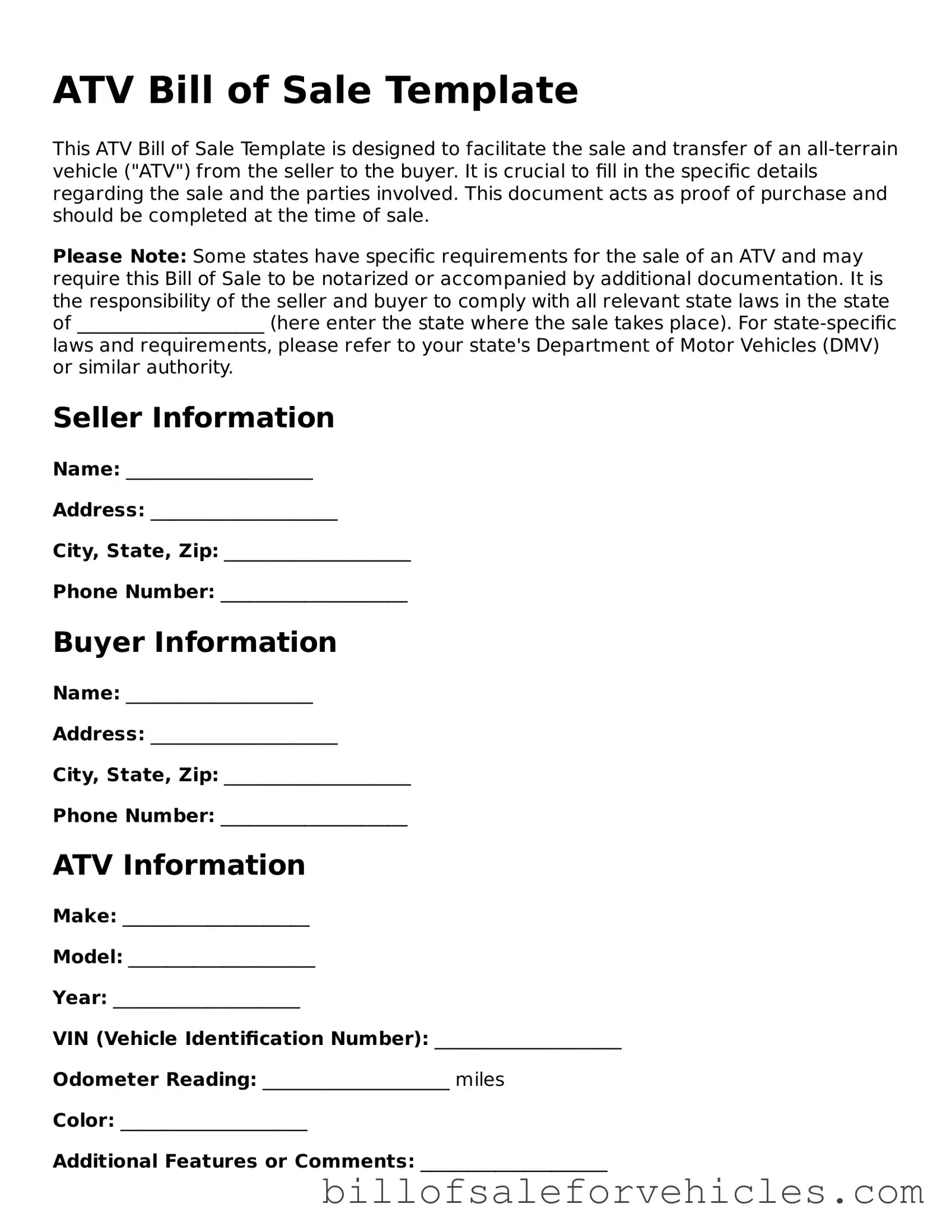ATV Bill of Sale Template
This ATV Bill of Sale Template is designed to facilitate the sale and transfer of an all-terrain vehicle ("ATV") from the seller to the buyer. It is crucial to fill in the specific details regarding the sale and the parties involved. This document acts as proof of purchase and should be completed at the time of sale.
Please Note: Some states have specific requirements for the sale of an ATV and may require this Bill of Sale to be notarized or accompanied by additional documentation. It is the responsibility of the seller and buyer to comply with all relevant state laws in the state of ____________________ (here enter the state where the sale takes place). For state-specific laws and requirements, please refer to your state's Department of Motor Vehicles (DMV) or similar authority.
Seller Information
Name: ____________________
Address: ____________________
City, State, Zip: ____________________
Phone Number: ____________________
Buyer Information
Name: ____________________
Address: ____________________
City, State, Zip: ____________________
Phone Number: ____________________
ATV Information
Make: ____________________
Model: ____________________
Year: ____________________
VIN (Vehicle Identification Number): ____________________
Odometer Reading: ____________________ miles
Color: ____________________
Additional Features or Comments: ____________________
Sale Information
Date of Sale: ____________________
Sale Price: $____________________
The seller warrants that they are the legal owner of the said ATV and have the right to sell it. They have disclosed all information regarding the condition of the ATV and have sold it in an "as-is" condition, meaning no warranties are given after the sale.
The buyer accepts the ATV as-is and acknowledges receipt of this Bill of Sale and the ATV described herein.
Signatures
Seller's Signature: ____________________
Date: ____________________
Buyer's Signature: ____________________
Date: ____________________
Keep a copy of this document for your records, as it will be important for registration, title transfer, and tax purposes.
